I have read that these are often associated with the Jamestown colony, but I cannot find anything supporting that except that an example was found there.
Can anyone help with any further info?
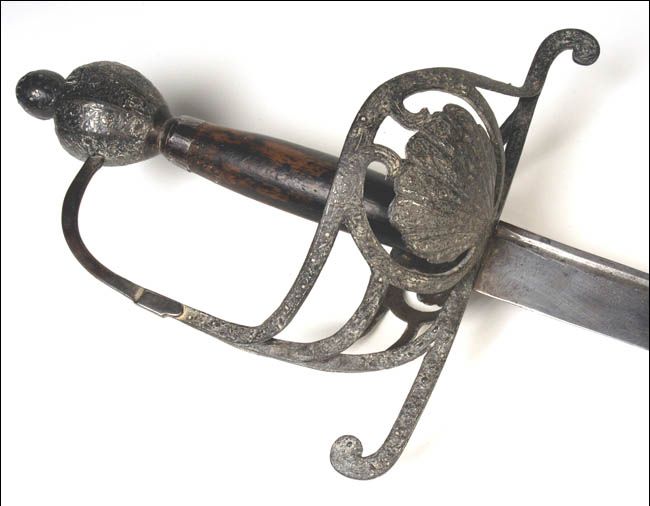
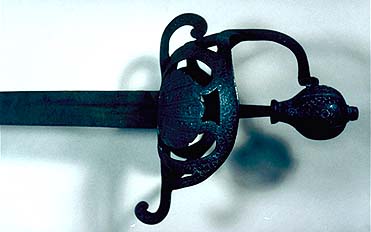
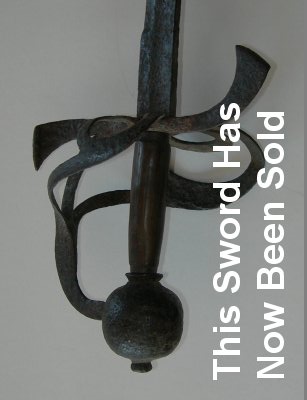
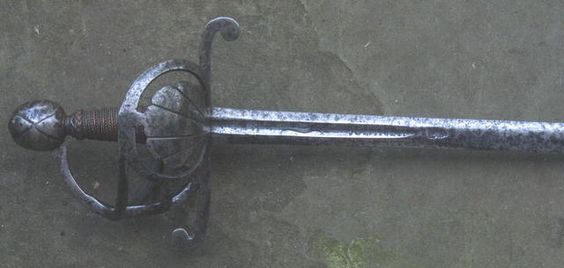
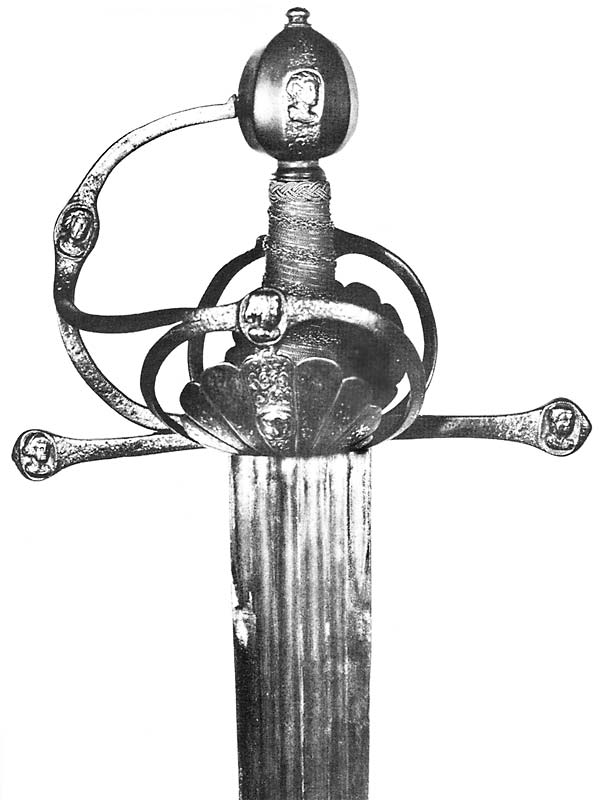
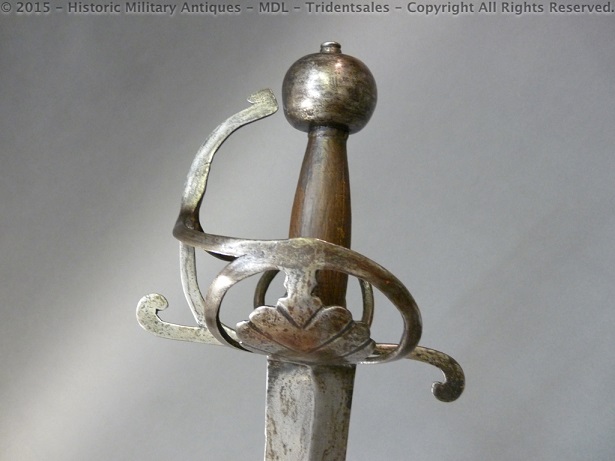
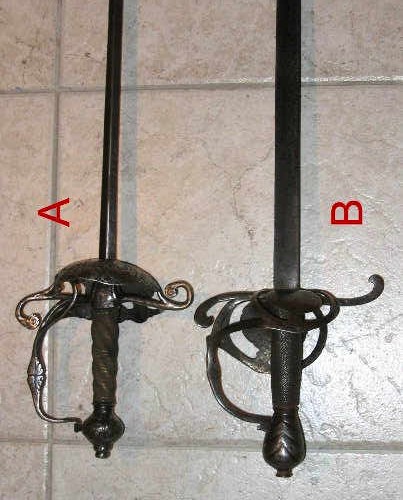
[ Download ]







| M Boyd wrote: |
|
Craig, thanks for the suggestions. I'm familiar with the parts of hilt construction and their nomenclature. What I'm looking for is if hilt with this general layout have a particular term grouping them - regardless of the type of blade they're fitted to. |

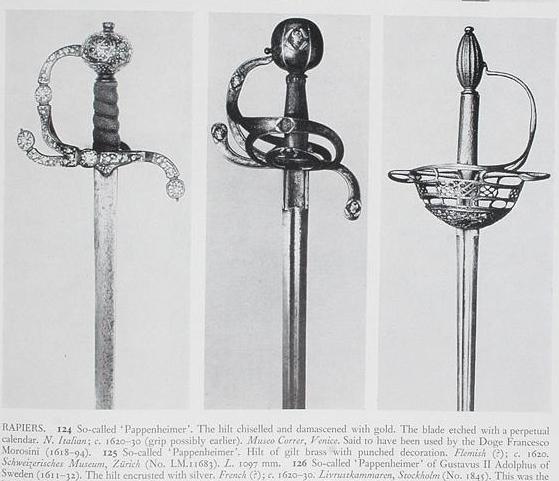
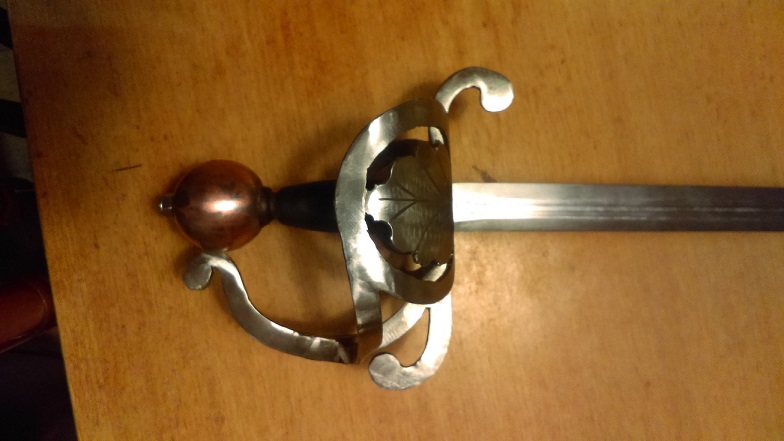
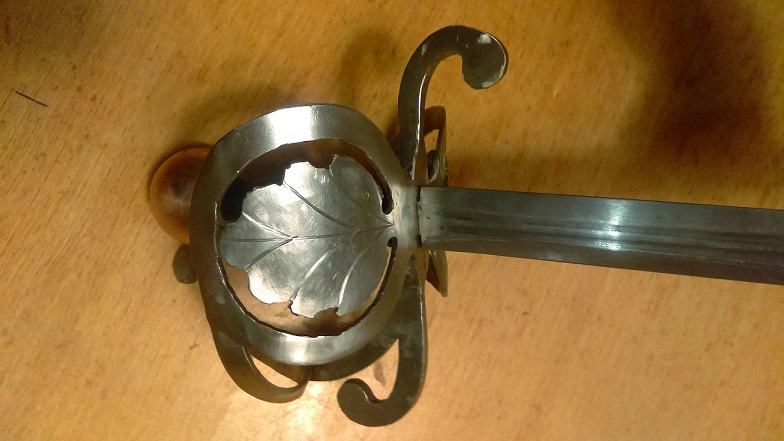
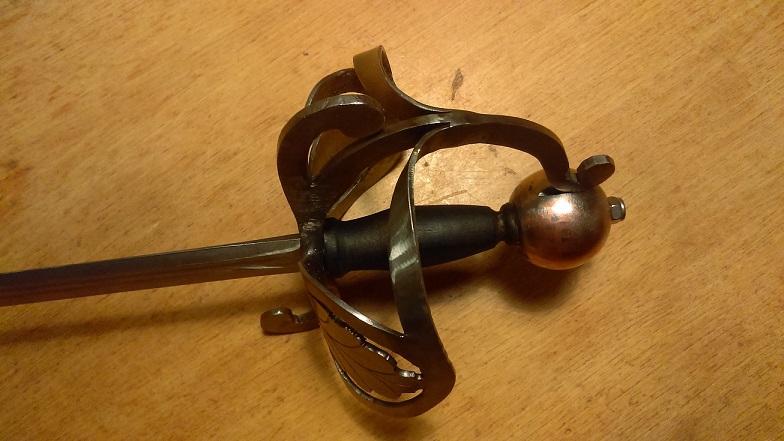
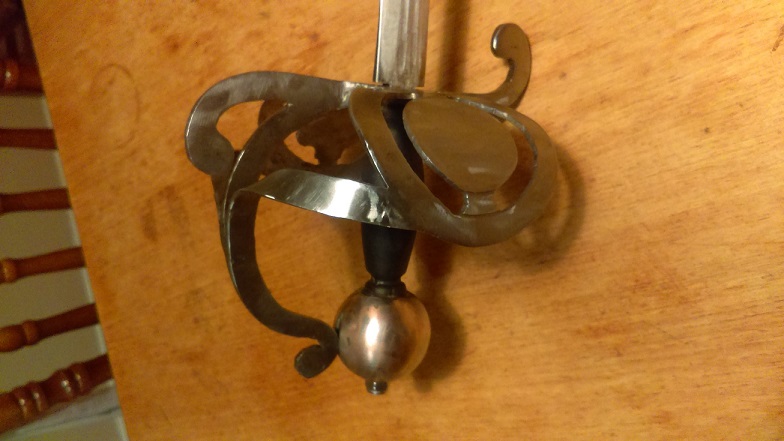
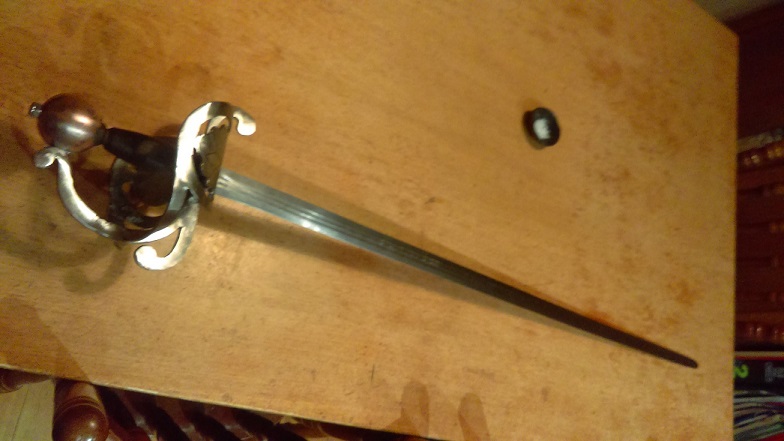
| E.B. Erickson wrote: |
| I think that your recreation is rather well done, especially for a first try at this style of sword. You have managed to capture the "feel" of one of these! Minor suggestions: narrow the width of the hilt elements a tad, and make the bars that connect the shell to the knucklebow twist the other way.
--ElJay |